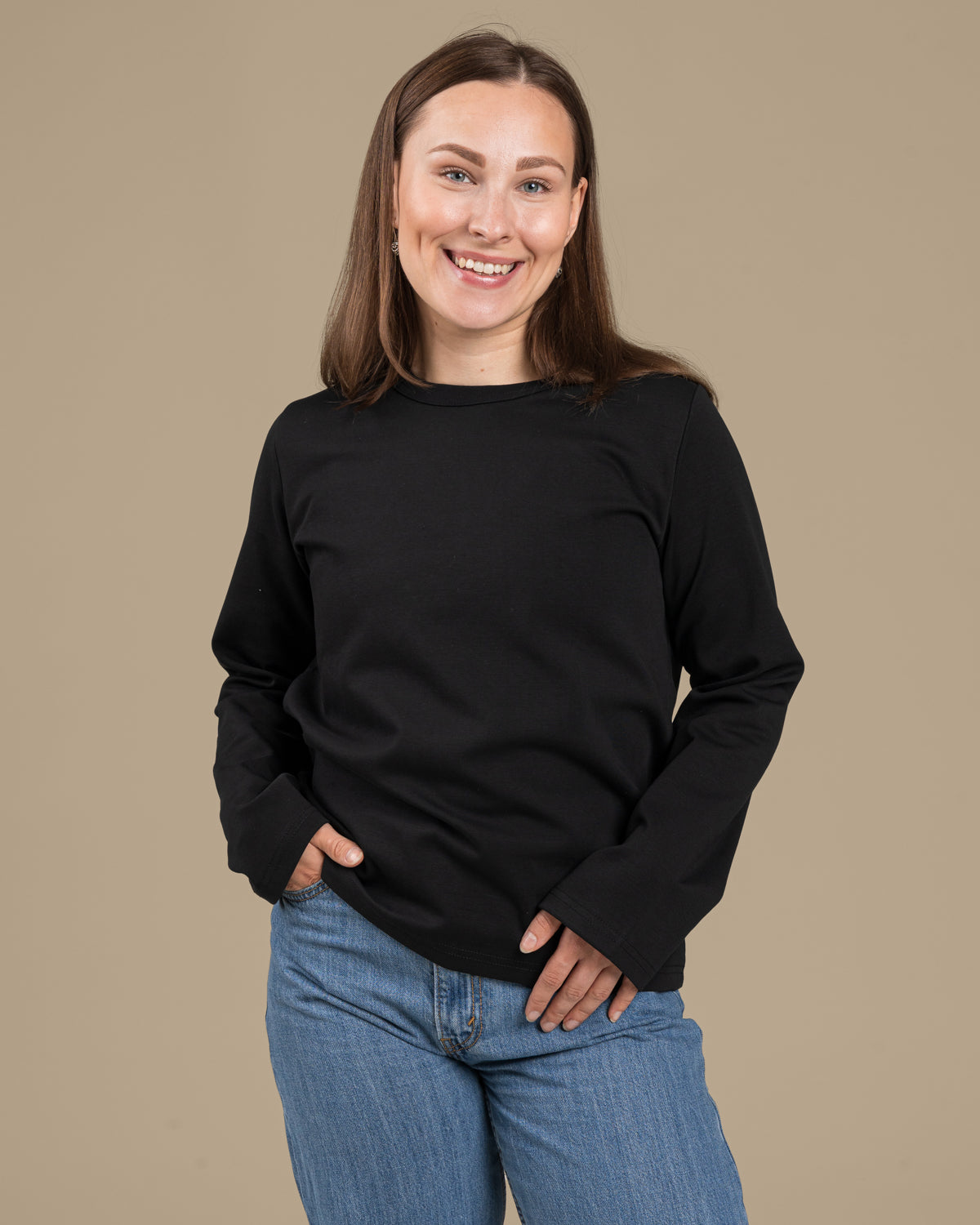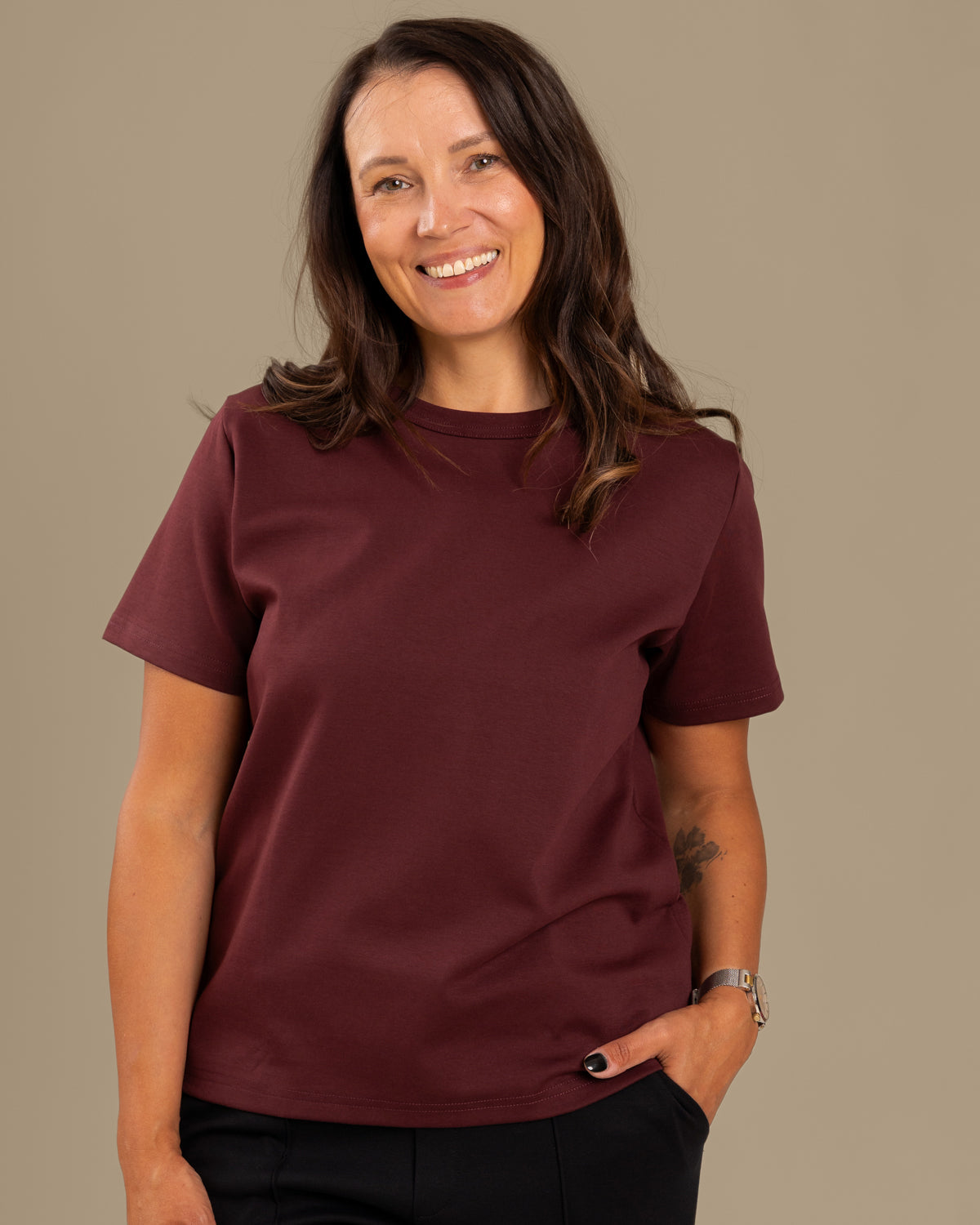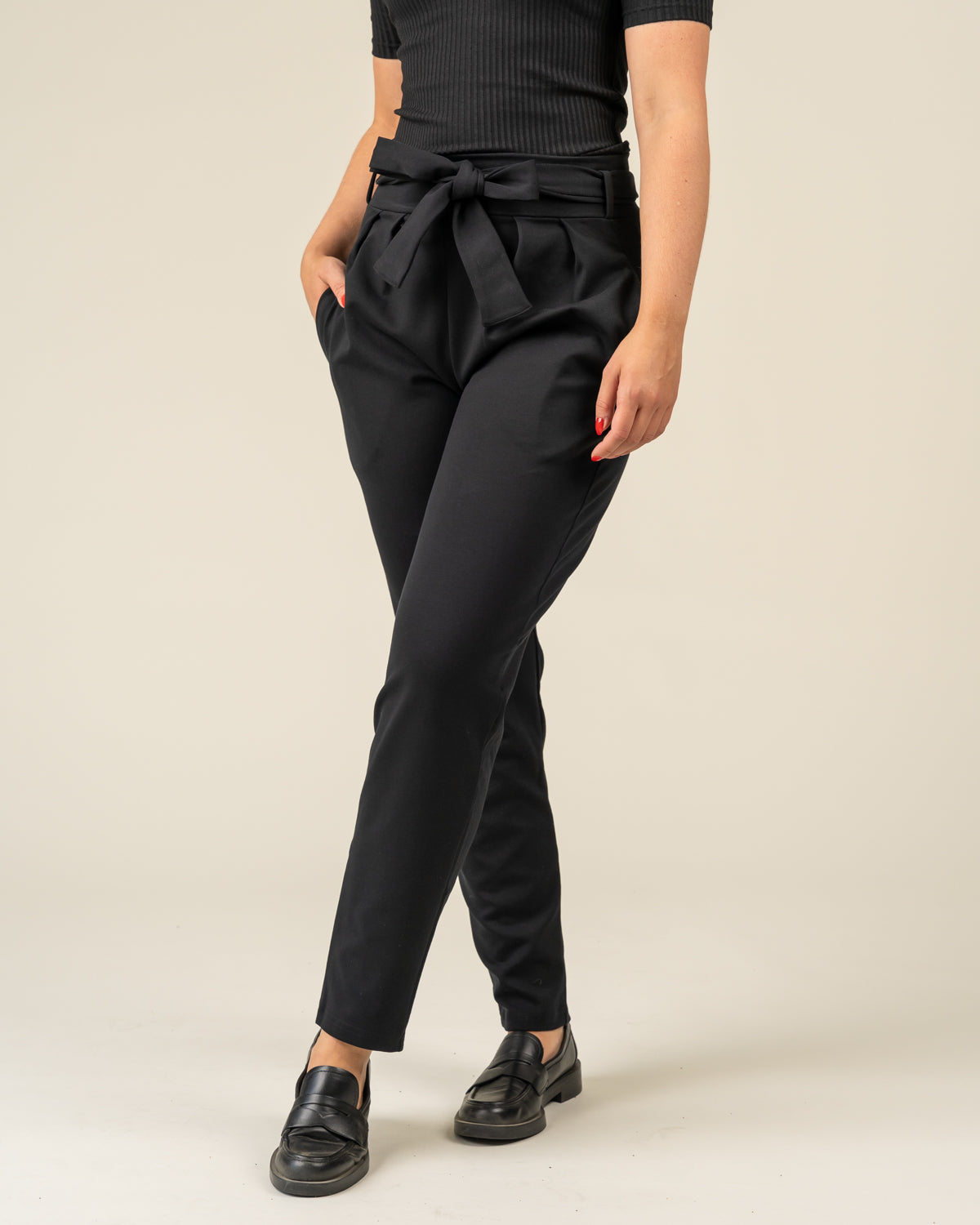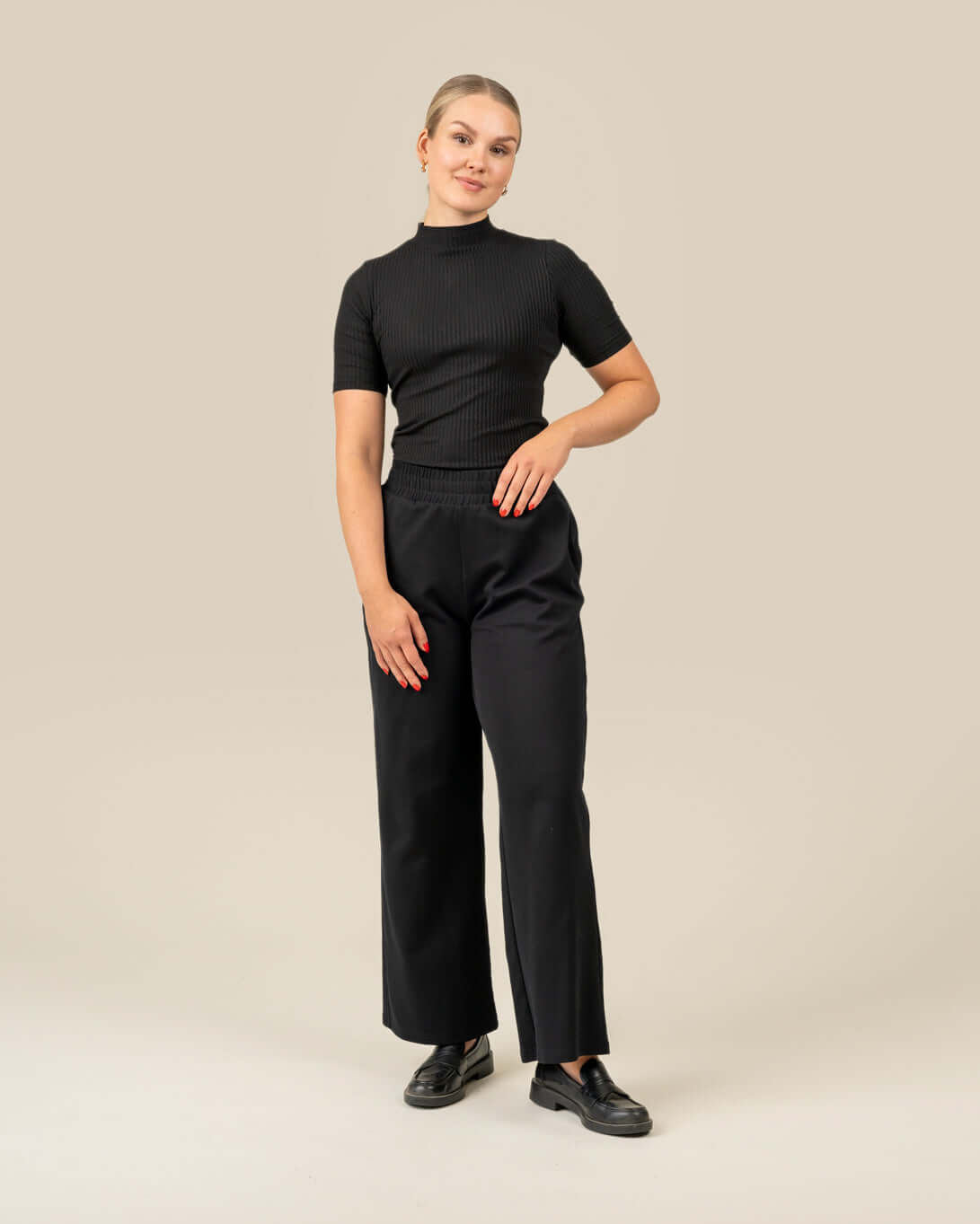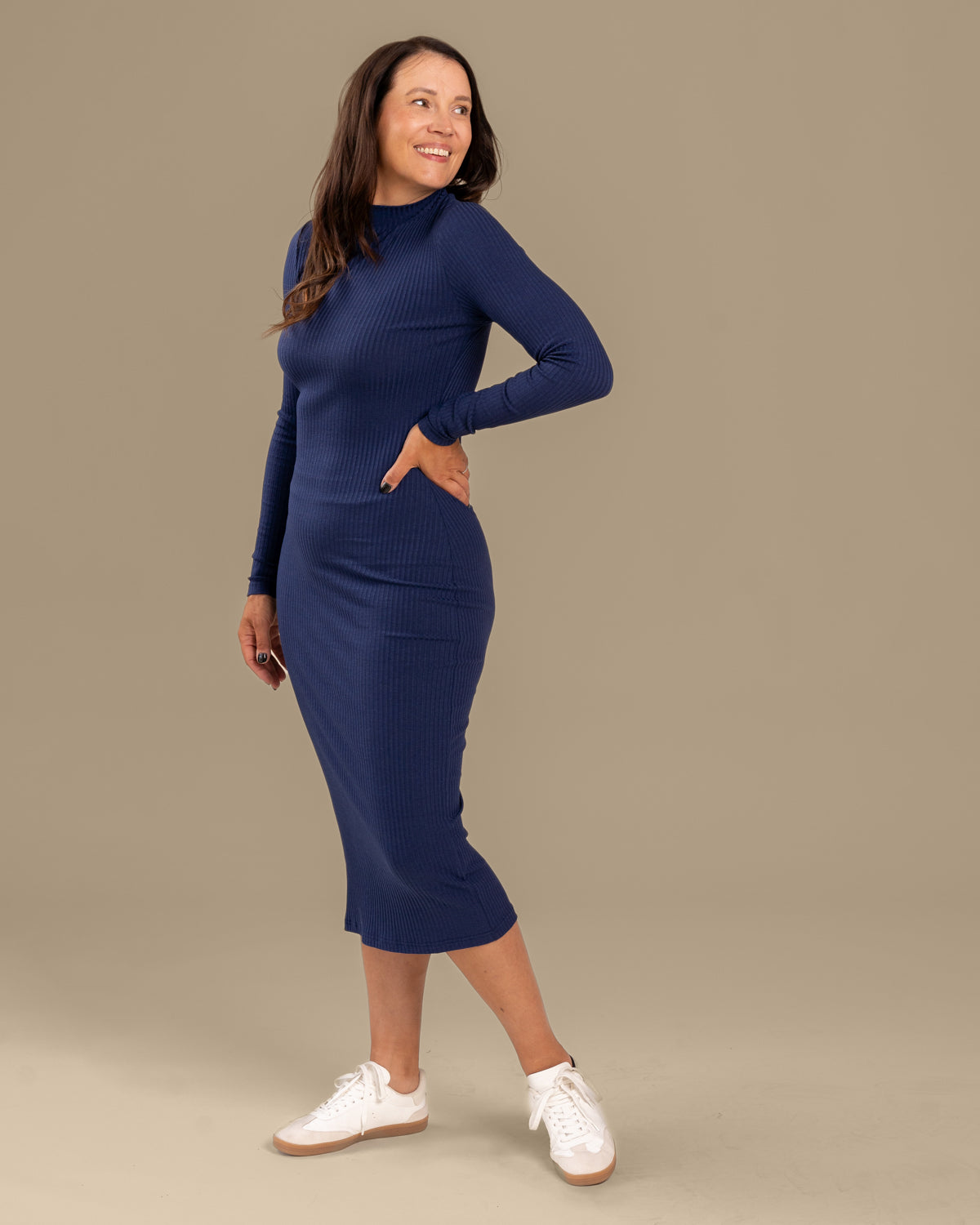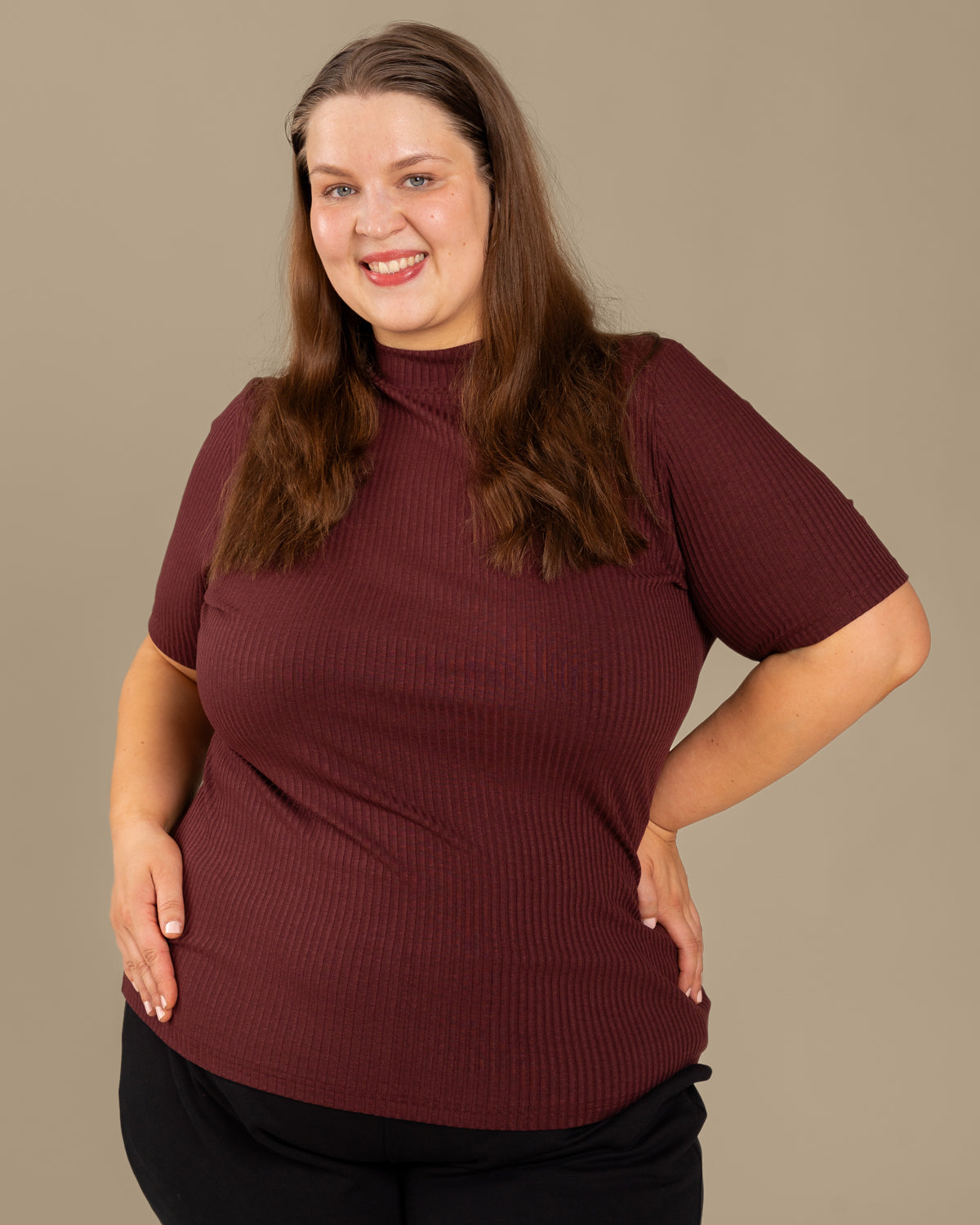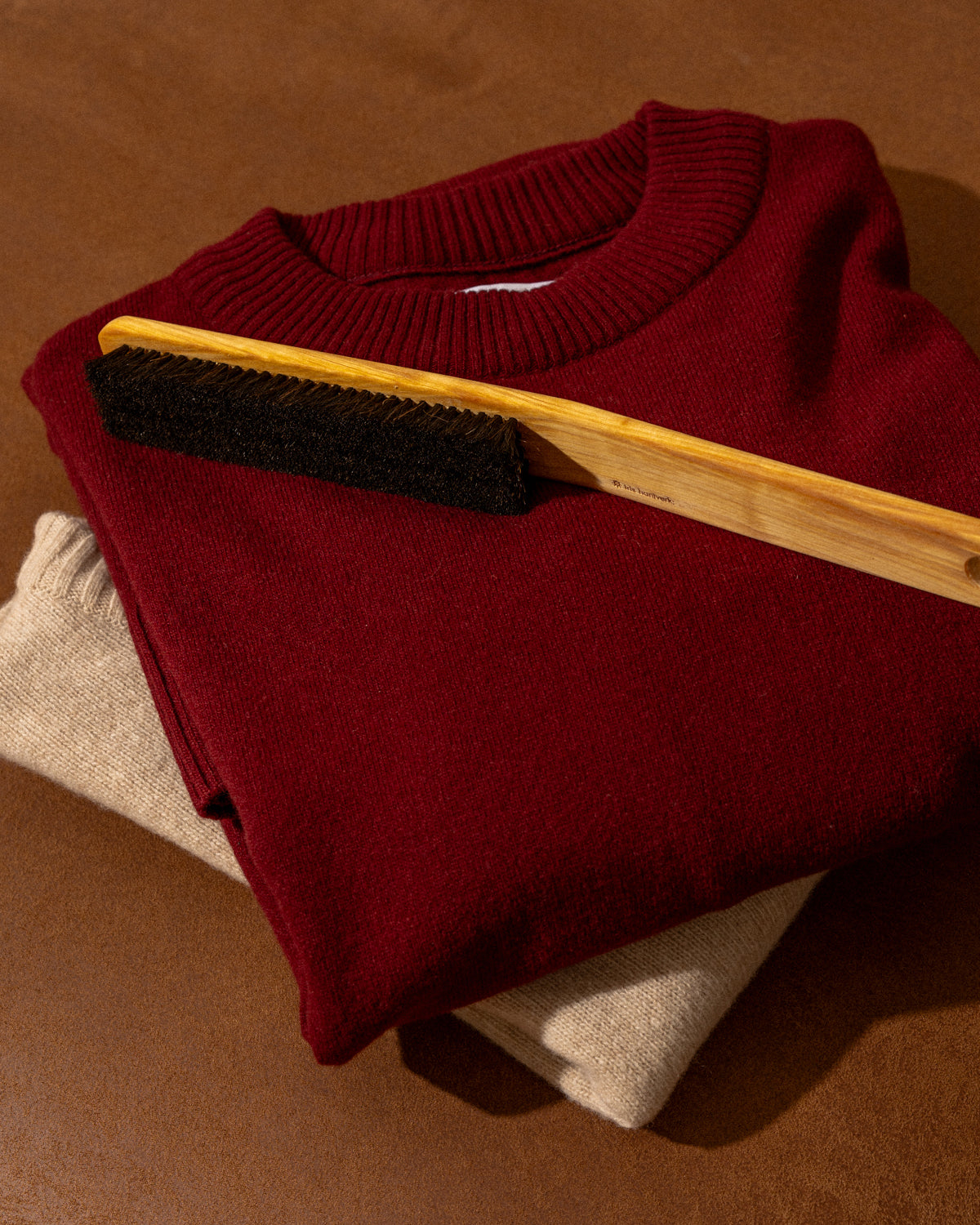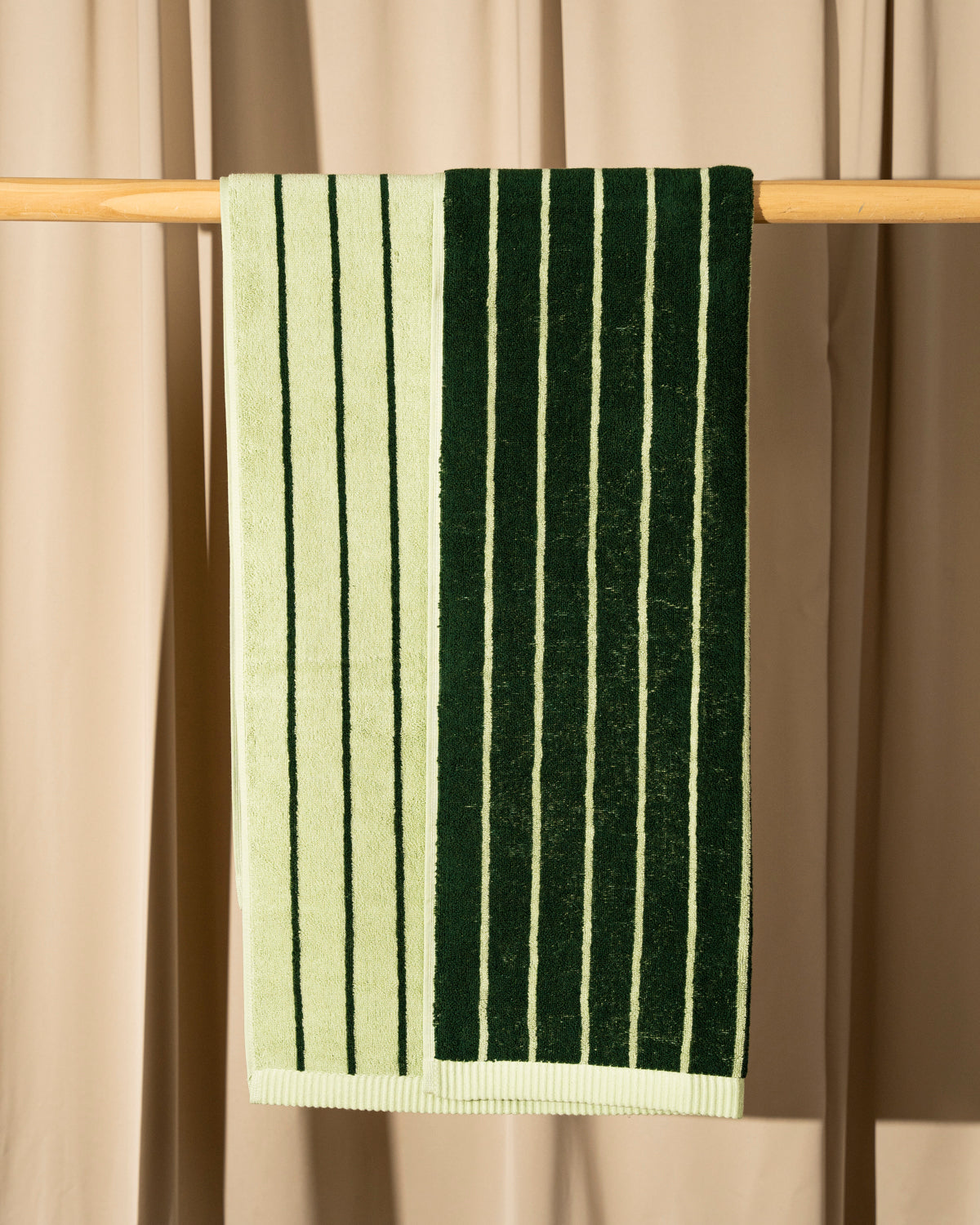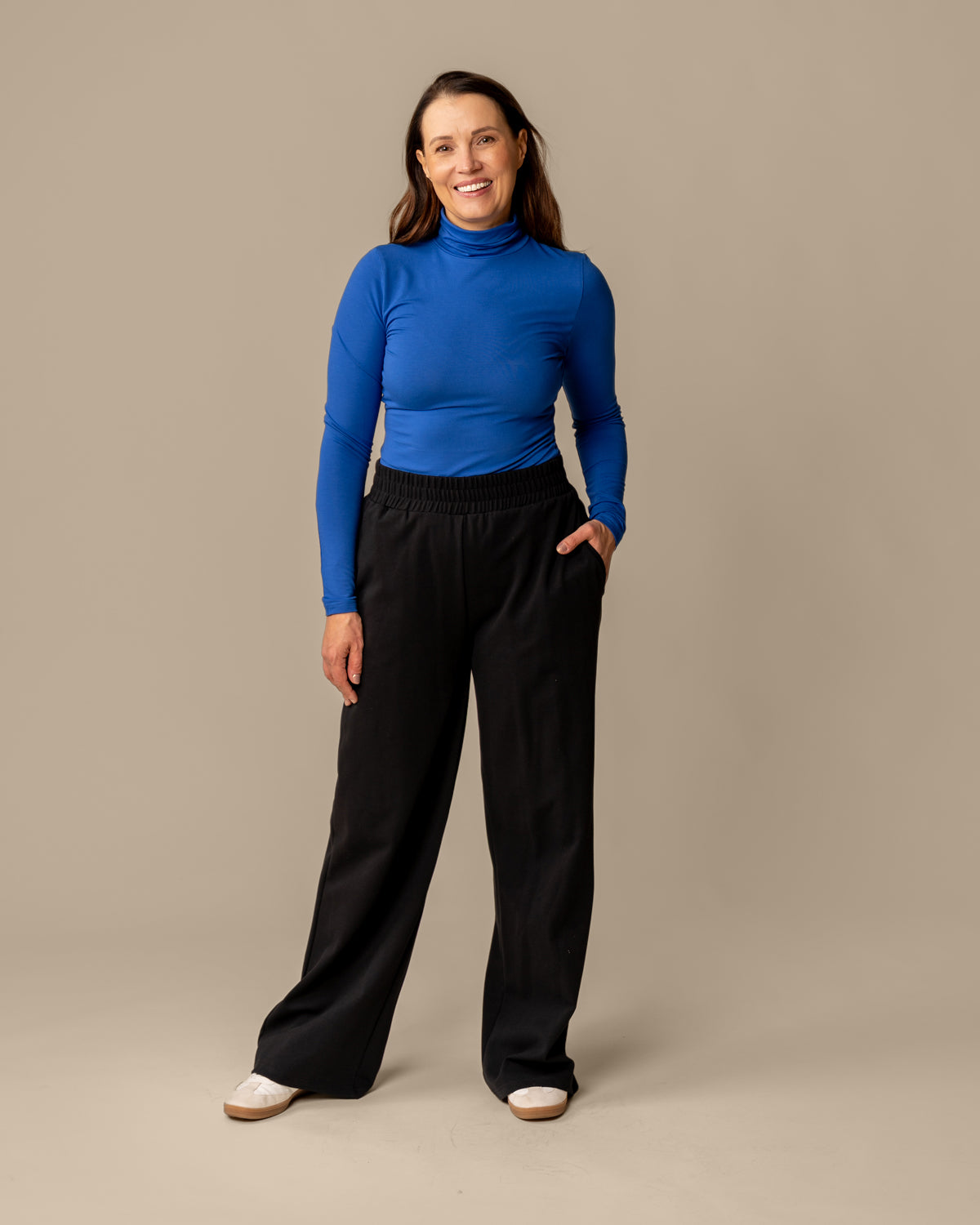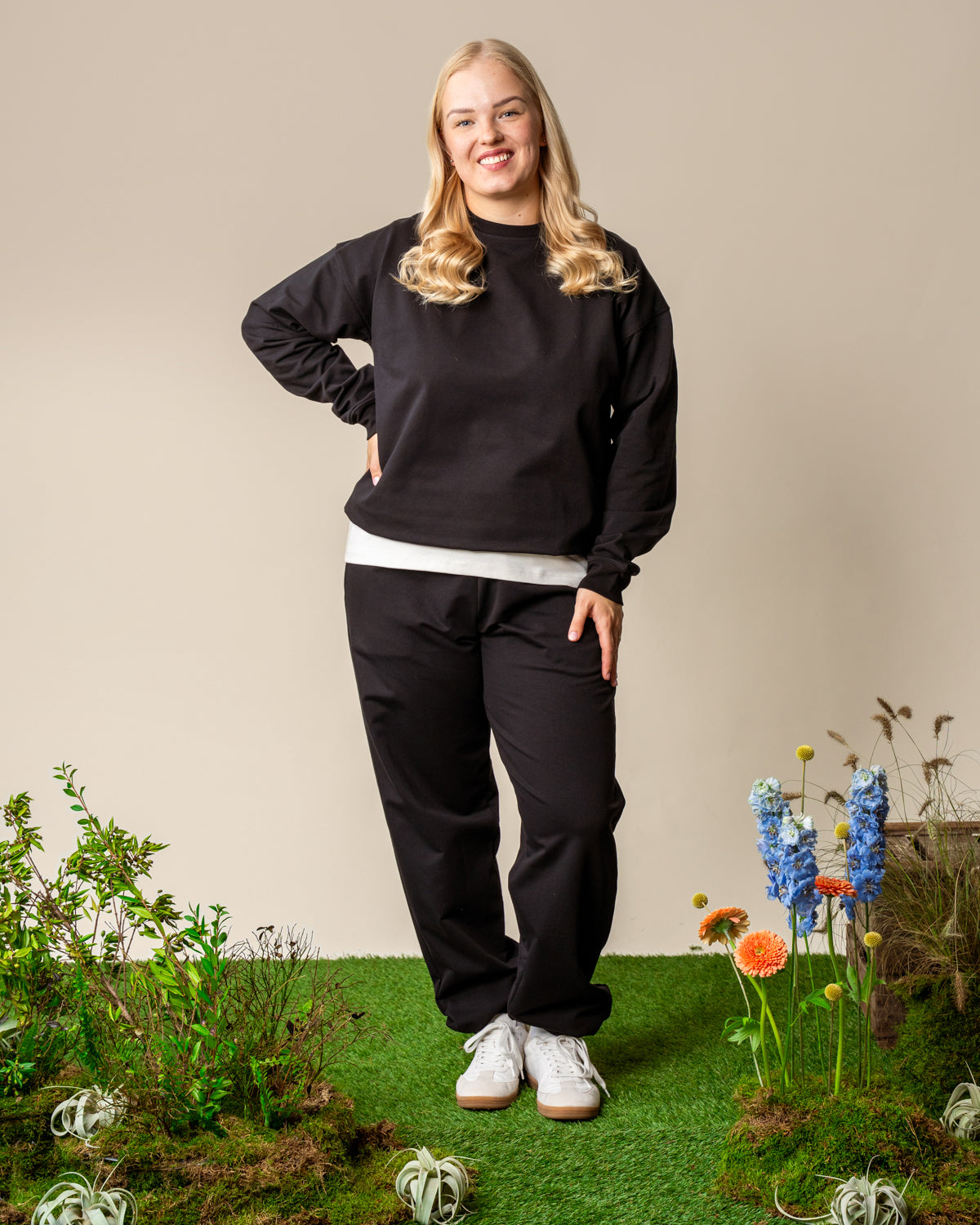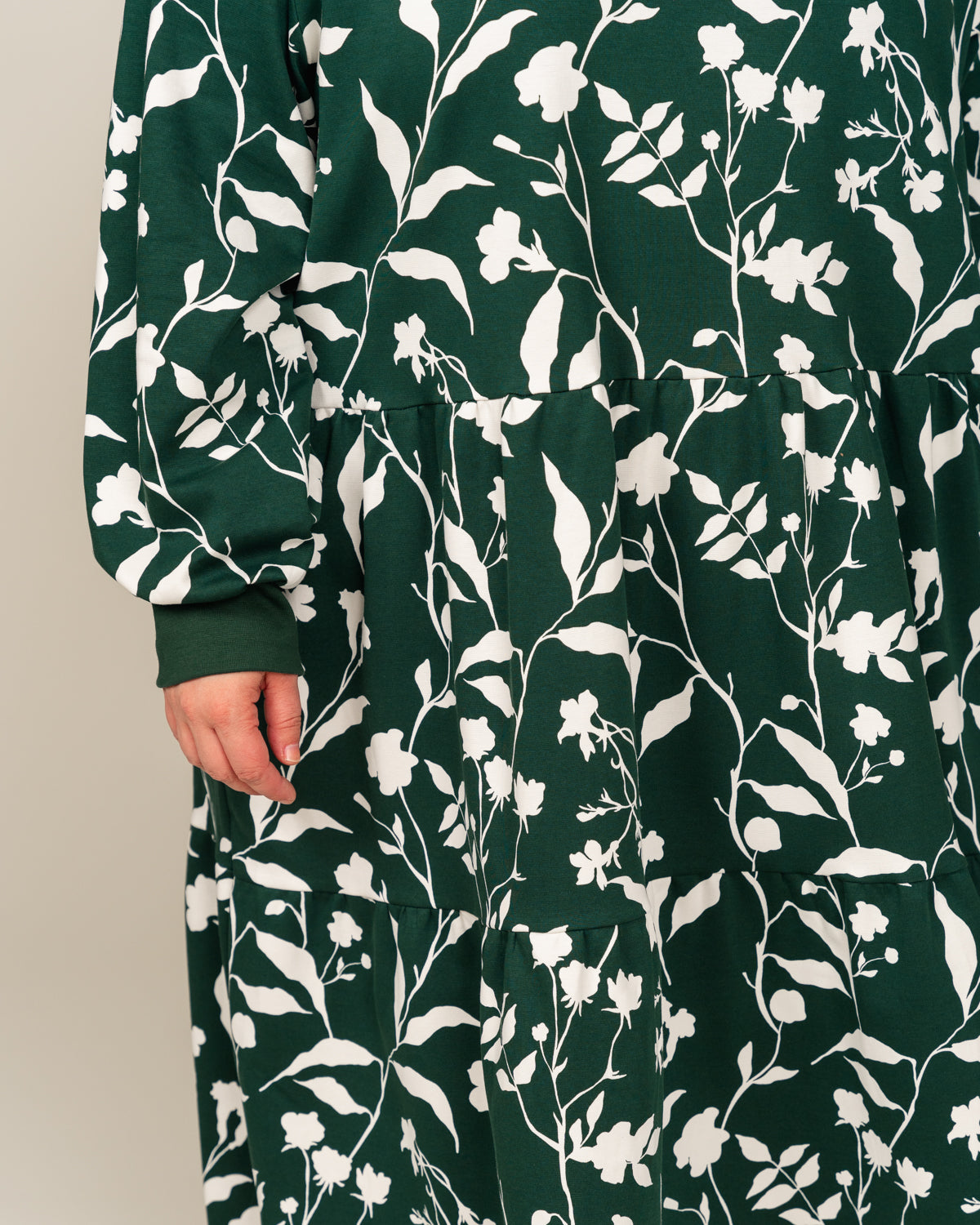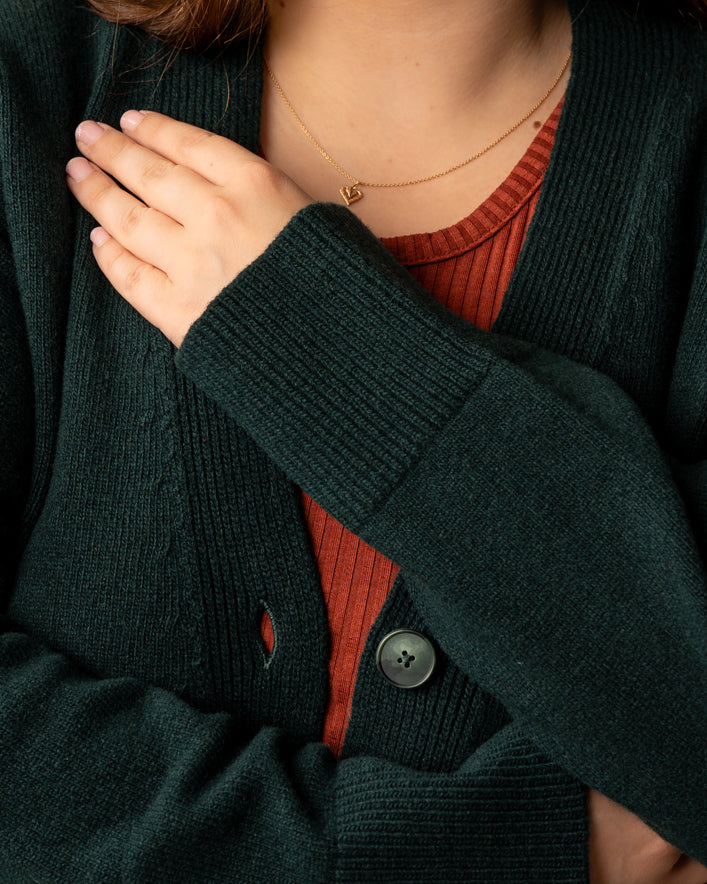
How to Recognize a High-Quality Knit – 4 Tips for Finding a Lasting Sweater
A high-quality knit is a timeless cornerstone of your wardrobe – a classic that endures year after year and always looks and feels good to wear. We’ve gathered the most important tips to help you identify a durable and well-made sweater with ease.

1. The Material Reveals the Quality
The most important feature of a sustainable knitwear piece is its material – so always check the fabric composition on the care label. When it comes to sweaters and knitwear, it’s best to choose natural fibers such as wool, merino wool, alpaca, cashmere, or mohair. For example, a high-quality merino wool sweater both warms and breathes at the same time, while feeling wonderfully soft against the skin. Read more about the unique properties of merino wool and discover our knitwear made from 100% mulesing-free merino wool.
Synthetic fibers such as polyester, polyamide, and acrylic are often added to knits. A small amount of polyamide, for instance, can improve the durability of the garment, but synthetics should make up no more than 30 % of the total material. In larger quantities, synthetic fibers can cause various issues. For example, knits containing acrylic may start pilling after just a few wears and can be difficult to keep looking neat. Polyester knits, on the other hand, don’t breathe at all and can therefore feel hot and uncomfortable. Polyester and acrylic are most often added to knitwear to reduce production costs.

2. Examine the Surface and Seams of the Knitwear
A high-quality knit has a smooth, even, and dense surface. A durable knit fabric feels firm and springs back to its original shape when stretched. In contrast, a loose or uneven knit will quickly lose its shape. Additionally, a well-made knit feels pleasant against the skin and fits the wearer neatly and with structure.
When assessing a knit, it’s also important to consider its comfort and practicality. For instance, regular wool can sometimes feel coarse or itchy against the skin. Knits made from long-fiber materials, such as mohair blends, can look beautiful and feel soft to the touch, but they may shed fibers and develop a fuzzy surface quite quickly with wear.
Beyond the surface, it’s worth taking a look inside the garment as well. In a quality knit, the seams are carefully finished. The seams should be straight, neat, and firm.

3. Consider the Price and Production Responsibility
A high-quality knit usually costs more than a mass-produced synthetic one, but it’s also a smarter long-term investment. Read more about the price structure of our products. Over the years, the cost per wear of a durable knit becomes lower than that of cheaper sweaters that need to be replaced annually. In addition, a well-made, classic knit complements many outfits and never goes out of style.
The price, quality, and production conditions of a knit are often closely connected. Premium natural materials and responsible production practices naturally increase the price of a garment. However, a high price alone does not guarantee quality or ethical manufacturing, so it’s always worth finding out how and where the knit was made. Brands that operate responsibly communicate openly and transparently about their practices and production. Read more about the production of our knitwear and our visit to the Garlita factory in Lithuania.

4. Care for, Maintain, and Store Your Knit Properly
A high-quality knit can be a long-lasting companion when cared for correctly. For most natural materials, airing is the best and most important form of maintenance. For example, our 100% merino wool knitwear are breathable and naturally repel dirt, so simply letting them air out, freezing them, or placing cedar balls in your wardrobe will help keep them fresh. Always store knits flat to prevent hanger marks or stretching at the shoulders. Wash your knitwear sparingly and always according to the care label instructions, using a detergent suitable for the material. Remember to dry your knits flat after washing to keep them from losing their shape.
Maintain your knitwear regularly using a wool comb. Over time, friction will cause pilling on all kinds of knits, but a high-quality garment can easily be refreshed and kept looking neat. Read more about caring for merino wool knitwear and garment maintenance.


